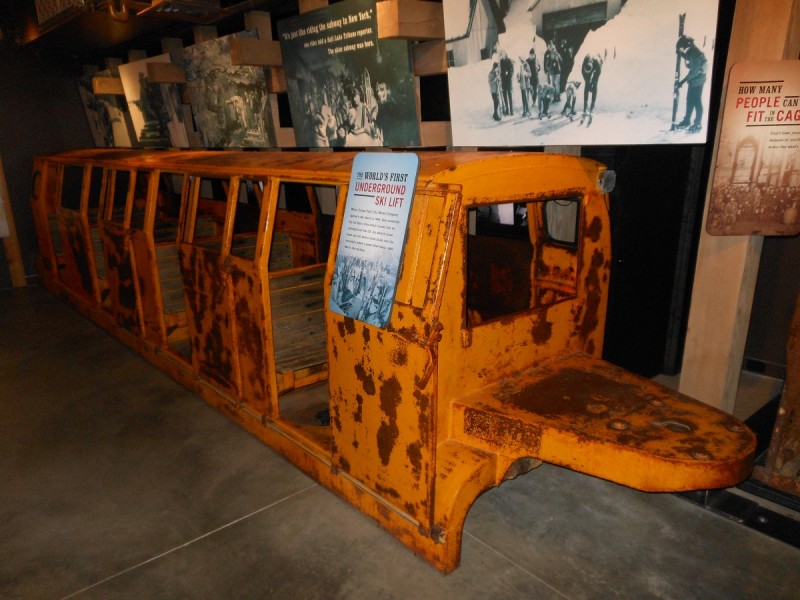
The world's first underground ski lift now housed in Utah's Park City Museum was an uncomfortable experience for many.
Get a new appreciation for the slopes by scooting aboard the world’s first underground ski lift housed in the bowels of the Park City Museum in Park City, Utah.
Now a celebrated ski town, Park City was once a Western mining town with some 1,000 miles of shafts and tunnels underneath today’s groomed trails.
When the silver business tanked, the resort economy was born and in the early 1960s, mine cars were transformed into uncomfortable subterranean transportation shuttling skiers and their gear three miles in one hour through a water-dripping tunnel to the mountain where a mine elevator uplifted them 1,800 feet to the surface.
A novelty, the “skier subway” closed in February of 1969 as skiers favored a faster gondola and didn’t have to contend with oil and grease plopping on them.
The Main Street Museum contained in a former library, bell tower, and city hall captures the town’s endearing spirit as it pays homage to its skiing and mining history.
The skier subway’s dark world in the museum’s basement provides a glimpse in the mining world complete with tools and the town’s tiny territorial jail.
Take a stroll through an old school Park City neighborhood, explore a two-story model of a 19th century mine, walk by a stagecoach, climb on a re-created railcar and get lost in the yesterdays of skiing when when group instruction cost a mere $2.50.
Park City’s impressive timeline also includes hosting the Winter Olympic Games in 2002. A few miles from downtown, the Utah Olympic Park continues the legacy serving not only as an official U.S. Olympic training site but also housing the Alf Engen Ski Museum and George Eccles 2002 Olympic Winter Games Museum. Experience the museums complete with games, theater, interactive exhibits and lots of trophies, medials, uniforms and photos paying tribute to both the region’s skiing pioneers and international stars of snow.
Mannequins on early snowboards hang overhead. Visitors can achieve simulated flight on a grounded quad chairlift that sways and dips smack in front of a giant movie screen showing a paragliding skier in nearby Little Cottonwood Canyon. Wander through the world of snow sports displays providing insight into curling, skating and the various bobsled, luge and skeleton sleds.
Giant costume heads from the Olympic ceremonies fill the walls while keen-eyed riders will find a snowboard under glass signed by Vermonters Kelly Clark and Ross Powers. That was a banner year for U.S. snowboarding as Powers led the American sweep of the men’s halfpipe and Clark took home a gold in women’s halfpipe for solid places in snowboard history achieved a couple of thousand miles from home.
Outside the museum, future top-notch ski jumpers and aerialists take flight, but during the non-snow months. During that time, athletes take to the pools at Utah Olympic Park where they are able to slide down jumps, execute aerial manuevers and then land in the comforting waters.
A look at the ski jumps give a newfound appreciation for what athletes dedicated to that discipline need to do. There are the stops, the jump as they soar through the sky like Flying V’s only coming to earth in a bended-knee landing reminiscent of a telemark turn.
But in winter, it is there that visitors can get an incredible thrill by taking a bobsleigh run on the official track of the Olympic Park. Not only did U.S. athletes train there, but do did at least one member of the Jamaican bobsleigh team that once again captured the world’s heart during the 2014 Olympic Games in Sochi with its grit and determination.
Image by Marty Basch
 Your Privacy Choices
Your Privacy Choices